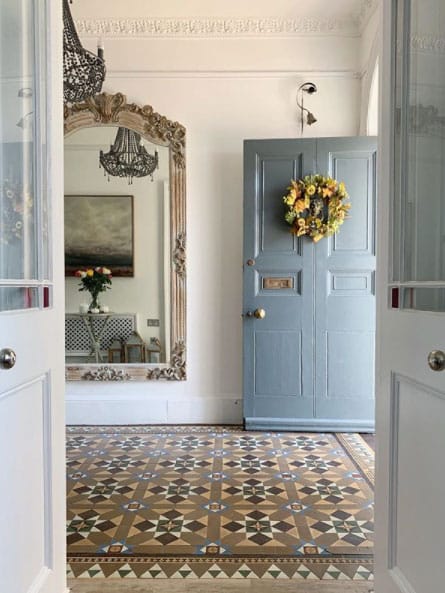Exploring Architectural Features of Victorian Homes
Whether you live in a Victorian home and want to make the most of its original details – or you’re thinking of moving and want to know what period features to look out for – this guide could help you. We’ve pulled together a selection of the architectural hallmarks and decorative details that distinguish properties of this era.

TILED FLOORS
Practical as well as beautiful, a key feature of a Victorian property is a tiled floor ‐ from paths and porches to hallways and kitchens. These were first found in prestigious buildings and villas in the 1860s, but by the late 19th century they were in every home. Using geometric and encaustic (patterned) tiles, the Victorians created a range of monochrome and coloured designs. These fell out of favour and were often covered over in the 60s and 70s, but you may be lucky enough to find an original floor by lifting a carpet or boarded floor. And thanks to their durability, even if they need restoring, they can look as good now as they did when they were laid.

STAINED GLASS
By the late 1800s, stained glass was prevalent in the front doors of many houses. Jewel‐coloured glass in ornate patterns not only aids privacy but makes the most of sunlight to create stunning, colourful patterns in the home. The Victorians used stained glass in staircase and bathroom windows, too – incorporating a range of designs from simple borders and background colours through to intricate floral and geometric designs. Finding undamaged original stained glass is a treat – but damaged Victorian stained glass can also be brought back to life by a restoration specialist.

CORNICING & CEILING ROSES
Moulded architectural detail was fundamental to Victorian interior design. They loved to use cornicing, coving and ceiling roses to enhance the proportions of a room as well as to show off the room’s importance. The more decorative, the more status a space had – and the more likely it was a room where guests were welcomed. Moulding had a practical use, too – hiding basic construction methods of the time or for corbels and archways, to support a structure. Crumbling or damaged plasterwork can be repaired by making a mould from the detail that remains – so if you’ve lost a leaf, fleur de lys, bird or a scroll, try to restore your Victorian detail rather than replace it.

SASH WINDOWS
The Georgians favoured regularity in windows, however the Victorian preference was to give a property an individual look and feel. Bay windows emerged, some two or three storeys high with ornate frames. And sash windows had larger panes of glass and fewer glazing bars thanks to advances in glass production and the glass tax being repealed. Heavy panes of glass meant frames had to become more robust – ‘horns’ were introduced to strengthen the structure of a window, and the Victorian’s took this opportunity to carve them into different shapes and styles. Original timber sash windows are prized in properties today. Modern reproductions are a worthy alternative but original windows can often be renovated by specialists, like Ventrolla, to make them more energy efficient as well as to repair damage.
